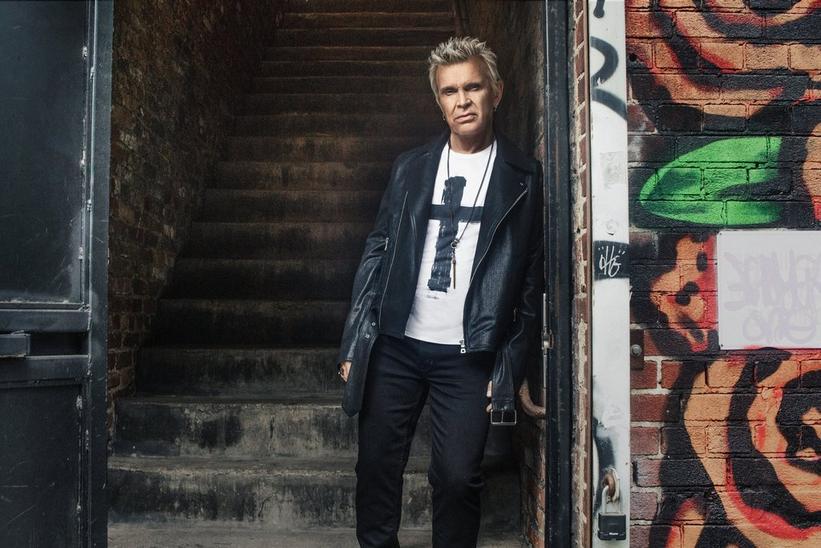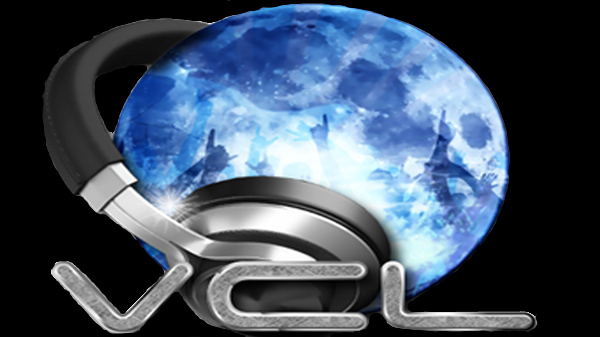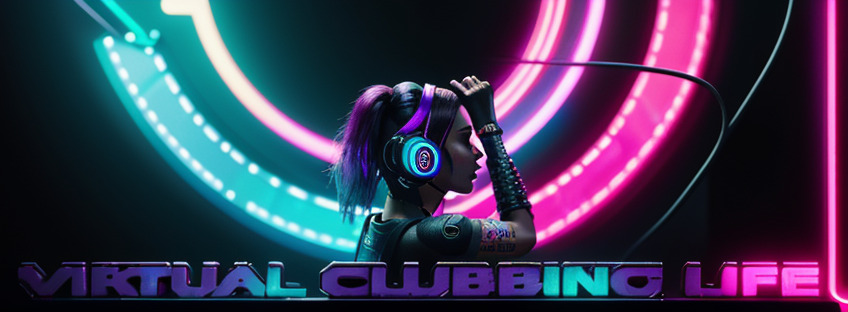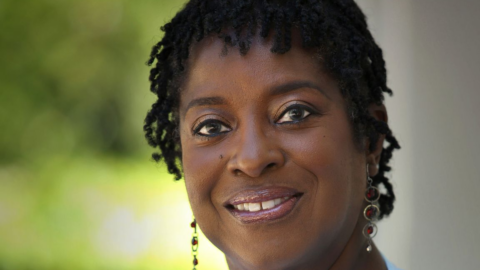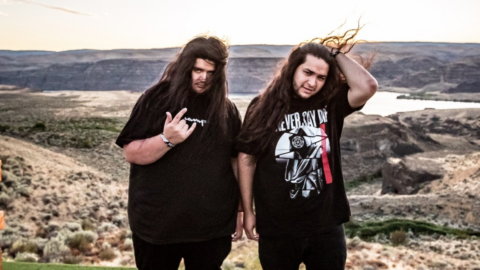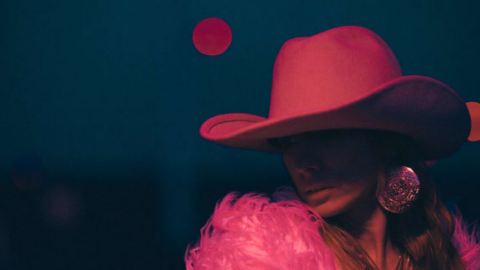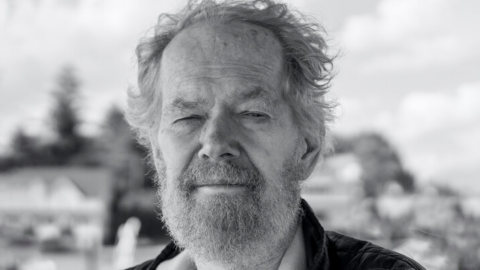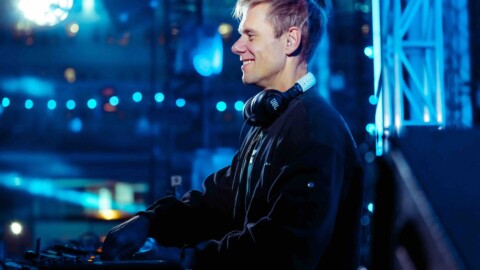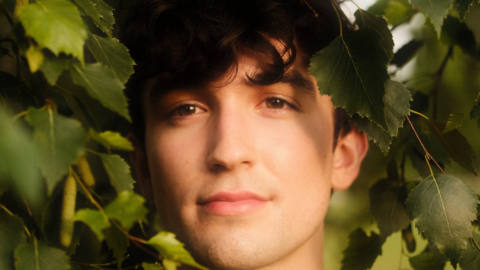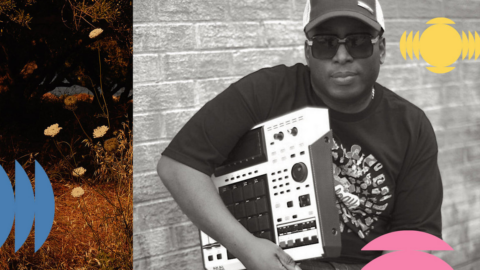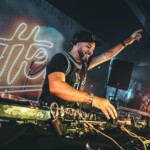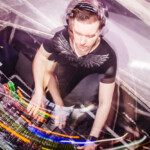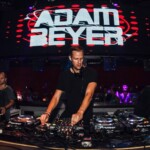Be the first to find out about GRAMMY nominees, winners, important news, and events. Privacy Policy
Photo: Steven Sebring
interview
"One foot in the past and one foot into the future," Billy Idol says, describing his decade-spanning career in rock. "We’ve got the best of all possible worlds because that has been the modus operandi of Billy Idol."
Living Legends is a series that spotlights icons in music still going strong today. This week, GRAMMY.com spoke with Billy Idol about his latest EP, Cage, and continuing to rock through decades of changing tastes.
Billy Idol is a true rock 'n' roll survivor who has persevered through cultural shifts and personal struggles. While some may think of Idol solely for "Rebel Yell" and "White Wedding," the singer's musical influences span genres and many of his tunes are less turbo-charged than his '80s hits would belie.
Idol first made a splash in the latter half of the '70s with the British punk band Generation X. In the '80s, he went on to a solo career combining rock, pop, and punk into a distinct sound that transformed him and his musical partner, guitarist Steve Stevens, into icons. They have racked up multiple GRAMMY nominations, in addition to one gold, one double platinum, and four platinum albums thanks to hits like "Cradle Of Love," "Flesh For Fantasy," and "Eyes Without A Face."
But, unlike many legacy artists, Idol is anything but a relic. Billy continues to produce vital Idol music by collaborating with producers and songwriters — including Miley Cyrus — who share his forward-thinking vision. He will play a five-show Vegas residency in November, and filmmaker Jonas Akerlund is working on a documentary about Idol’s life.
His latest release is Cage, the second in a trilogy of annual four-song EPs. The title track is a classic Billy Idol banger expressing the desire to free himself from personal constraints and live a better life. Other tracks on Cage incorporate metallic riffing and funky R&B grooves.
Idol continues to reckon with his demons — they both grappled with addiction during the '80s — and the singer is open about those struggles on the record and the page. (Idol's 2014 memoir Dancing With Myself, details a 1990 motorcycle accident that nearly claimed a leg, and how becoming a father steered him to reject hard drugs. "Bitter Taste," from his last EP, The Roadside, reflects on surviving the accident.)
Although Idol and Stevens split in the late '80s — the skilled guitarist fronted Steve Stevens & The Atomic Playboys, and collaborated with Michael Jackson, Rick Ocasek, Vince Neil, and Harold Faltermeyer (on the GRAMMY-winning "Top Gun Anthem") — their common history and shared musical bond has been undeniable. The duo reunited in 2001 for an episode of "VH1 Storytellers" and have been back in the saddle for two decades. Their union remains one of the strongest collaborations in rock 'n roll history.
While there is recognizable personnel and a distinguishable sound throughout a lot of his work, Billy Idol has always pushed himself to try different things. Idol discusses his musical journey, his desire to constantly move forward, and the strong connection that he shares with Stevens.
Steve has said that you like to mix up a variety of styles, yet everyone assumes you're the "Rebel Yell"/"White Wedding" guy. But if they really listen to your catalog, it's vastly different.
Yeah, that's right. With someone like Steve Stevens, and then back in the day Keith Forsey producing… [Before that] Generation X actually did move around inside punk rock. We didn't stay doing just the Ramones two-minute music. We actually did a seven-minute song. [Laughs]. We did always mix things up.
Then when I got into my solo career, that was the fun of it. With someone like Steve, I knew what he could do. I could see whatever we needed to do, we could nail it. The world was my oyster musically.
"Cage" is a classic-sounding Billy Idol rocker, then "Running From The Ghost" is almost metal, like what the Devil's Playground album was like back in the mid-2000s. "Miss Nobody" comes out of nowhere with this pop/R&B flavor. What inspired that?
We really hadn't done anything like that since something like "Flesh For Fantasy" [which] had a bit of an R&B thing about it. Back in the early days of Billy Idol, "Hot In The City" and "Mony Mony" had girls [singing] on the backgrounds.
We always had a bit of R&B really, so it was actually fun to revisit that. We just hadn't done anything really quite like that for a long time. That was one of the reasons to work with someone like Sam Hollander [for the song "Rita Hayworth"] on The Roadside. We knew we could go [with him] into an R&B world, and he's a great songwriter and producer. That's the fun of music really, trying out these things and seeing if you can make them stick.
I listen to new music by veteran artists and debate that with some people. I'm sure you have those fans that want their nostalgia, and then there are some people who will embrace the newer stuff. Do you find it’s a challenge to reach people with new songs?
Obviously, what we're looking for is, how do we somehow have one foot in the past and one foot into the future? We’ve got the best of all possible worlds because that has been the modus operandi of Billy Idol.
You want to do things that are true to you, and you don't just want to try and do things that you're seeing there in the charts today. I think that we're achieving it with things like "Running From The Ghost" and "Cage" on this new EP. I think we’re managing to do both in a way.
Obviously, "Running From The Ghost" is about addiction, all the stuff that you went through, and in "Cage" you’re talking about freeing yourself from a lot of personal shackles. Was there any one moment in your life that made you really thought I have to not let this weigh me down anymore?
I mean, things like the motorcycle accident I had, that was a bit of a wake up call way back. It was 32 years ago. But there were things like that, years ago, that gradually made me think about what I was doing with my life. I didn't want to ruin it, really. I didn't want to throw it away, and it made [me] be less cavalier.
I had to say to myself, about the drugs and stuff, that I've been there and I've done it. There’s no point in carrying on doing it. You couldn't get any higher. You didn't want to throw your life away casually, and I was close to doing that. It took me a bit of time, but then gradually I was able to get control of myself to a certain extent [with] drugs and everything. And I think Steve's done the same thing. We're on a similar path really, which has been great because we're in the same boat in terms of lyrics and stuff.
So a lot of things like that were wake up calls. Even having grandchildren and just watching my daughter enlarging her family and everything; it just makes you really positive about things and want to show a positive side to how you're feeling, about where you're going. We've lived with the demons so long, we've found a way to live with them. We found a way to be at peace with our demons, in a way. Maybe not completely, but certainly to where we’re enjoying what we do and excited about it.
[When writing] "Running From The Ghost" it was easy to go, what was the ghost for us? At one point, we were very drug addicted in the '80s. And Steve in particular is super sober [now]. I mean, I still vape pot and stuff. I don’t know how he’s doing it, but it’s incredible. All I want to be able to do is have a couple of glasses of wine at a restaurant or something. I can do that now.
I think working with people that are super talented, you just feel confident. That is a big reason why you open up and express yourself more because you feel comfortable with what's around you.
Did you watch Danny Boyle's recent Sex Pistols mini-series?
I did, yes.
You had a couple of cameos; well, an actor who portrayed you did. How did you react to it? How accurate do you think it was in portraying that particular time period?
I love Jonesy’s book, I thought his book was incredible. It's probably one of the best bio books really. It was incredible and so open. I was looking forward to that a lot.
It was as if [the show] kind of stayed with Steve [Jones’ memoir] about halfway through, and then departed from it. [John] Lydon, for instance, was never someone I ever saw acting out; he's more like that today. I never saw him do something like jump up in the room and run around going crazy. The only time I saw him ever do that was when they signed the recording deal with Virgin in front of Buckingham Palace. Whereas Sid Vicious was always acting out; he was always doing something in a horrible way or shouting at someone. I don't remember John being like that. I remember him being much more introverted.
But then I watched interviews with some of the actors about coming to grips with the parts they were playing. And they were saying, we knew punk rock happened but just didn't know any of the details. So I thought well, there you go. If ["Pistol" is] informing a lot of people who wouldn't know anything about punk rock, maybe that's what's good about it.
Maybe down the road John Lydon will get the chance to do John's version of the Pistols story. Maybe someone will go a lot deeper into it and it won't be so surface. But maybe you needed this just to get people back in the flow.
We had punk and metal over here in the States, but it feels like England it was legitimately more dangerous. British society was much more rigid.
It never went [as] mega in America. It went big in England. It exploded when the Pistols did that interview with [TV host Bill] Grundy, that lorry truck driver put his boot through his own TV, and all the national papers had "the filth and the fury" [headlines].
We went from being unknown to being known overnight. We waited a year, Generation X. We even told them [record labels] no for nine months to a year. Every record company wanted their own punk rock group. So it went really mega in England, and it affected the whole country – the style, the fashions, everything. I mean, the Ramones were massive in England. Devo had a No. 1 song [in England] with "Satisfaction" in '77. Actually, Devo was as big as or bigger than the Pistols.
You were ahead of the pop-punk thing that happened in the late '90s, and a lot of it became tongue-in-cheek by then. It didn't have the same sense of rebelliousness as the original movement. It was more pop.
It had become a style. There was a famous book in England called Revolt Into Style — and that's what had happened, a revolt that turned into style which then they were able to duplicate in their own way. Even recently, Billie Joe [Armstrong] did his own version of "Gimme Some Truth," the Lennon song we covered way back in 1977.
When we initially were making [punk] music, it hadn't become accepted yet. It was still dangerous and turned into a style that people were used to. We were still breaking barriers.
You have a band called Generation Sex with Steve Jones and Paul Cook. I assume you all have an easier time playing Pistols and Gen X songs together now and not worrying about getting spit on like back in the '70s?
Yeah, definitely. When I got to America I told the group I was putting it together, "No one spits at the audience."
We had five years of being spat on [in the UK], and it was revolting. And they spat at you if they liked you. If they didn't like it they smashed your gear up. One night, I remember I saw blood on my T-shirt, and I think Joe Strummer got meningitis when spit went in his mouth.
You had to go through a lot to become successful, it wasn't like you just kind of got up there and did a couple of gigs. I don't think some young rock bands really get that today.
With punk going so mega in England, we definitely got a leg up. We still had a lot of work to get where we got to, and rightly so because you find out that you need to do that. A lot of groups in the old days would be together three to five years before they ever made a record, and that time is really important. In a way, what was great about punk rock for me was it was very much a learning period. I really learned a lot [about] recording music and being in a group and even writing songs.
Then when I came to America, it was a flow, really. I also really started to know what I wanted Billy Idol to be. It took me a little bit, but I kind of knew what I wanted Billy Idol to be. And even that took a while to let it marinate.
You and Miley Cyrus have developed a good working relationship in the last several years. How do you think her fans have responded to you, and your fans have responded to her?
I think they're into it. It's more the record company that she had didn't really get "Night Crawling"— it was one of the best songs on Plastic Hearts, and I don't think they understood that. They wanted to go with Dua Lipa, they wanted to go with the modern, young acts, and I don't think they realized that that song was resonating with her fans. Which is a shame really because, with Andrew Watt producing, it's a hit song.
But at the same time, I enjoyed doing it. It came out really good and it's very Billy Idol. In fact, I think it’s more Billy Idol than Miley Cyrus. I think it shows you where Andrew Watt was. He was excited about doing a Billy Idol track. She's fun to work with. She’s a really great person and she works at her singing — I watched her rehearsing for the Super Bowl performance she gave. She rehearsed all Saturday morning, all Saturday afternoon, and Sunday morning and it was that afternoon. I have to admire her fortitude. She really cares.
I remember when you went on "Viva La Bam" back in 2005 and decided to give Bam Margera’s Lamborghini a new sunroof by taking a power saw to it. Did he own that car? Was that a rental?
I think it was his car.
Did he get over it later on?
He loved it. [Laughs] He’s got a wacky sense of humor. He’s fantastic, actually. I’m really sorry to see what he's been going through just lately. He's going through a lot, and I wish him the best. He's a fantastic person, and it's a shame that he's struggling so much with his addictions. I know what it's like. It's not easy.
Musically, what is the synergy like with you guys during the past 10 years, doing Kings and Queens of the Underground and this new stuff? What is your working relationship like now in this more sober, older, mature version of you two as opposed to what it was like back in the '80s?
In lots of ways it’s not so different because we always wrote the songs together, we always talked about what we're going to do together. It was just that we were getting high at the same time.We're just not getting [that way now] but we're doing all the same things.
We're still talking about things, still [planning] things:What are we going to do next? How are we going to find new people to work with? We want to find new producers. Let's be a little bit more timely about putting stuff out.That part of our relationship is the same, you know what I mean? That never got affected. We just happened to be overloading in the '80s.
The relationship’s… matured and it's carrying on being fruitful, and I think that's pretty amazing. Really, most people don't get to this place. Usually, they hate each other by now. [Laughs] We also give each other space. We're not stopping each other doing things outside of what we’re working on together. All of that enables us to carry on working together. I love and admire him. I respect him. He's been fantastic. I mean, just standing there on stage with him is always a treat. And he’s got an immensely great sense of humor. I think that's another reason why we can hang together after all this time because we've got the sense of humor to enable us to go forward.
There's a lot of fan reaction videos online, and I noticed a lot of younger women like "Rebel Yell" because, unlike a lot of other '80s alpha male rock tunes, you're talking about satisfying your lover.
It was about my girlfriend at the time, Perri Lister. It was about how great I thought she was, how much I was in love with her, and how great women are, how powerful they are.
It was a bit of a feminist anthem in a weird way. It was all about how relationships can free you and add a lot to your life. It was a cry of love, nothing to do with the Civil War or anything like that. Perri was a big part of my life, a big part of being Billy Idol. I wanted to write about it. I'm glad that's the effect.
Is there something you hope people get out of the songs you've been doing over the last 10 years? Do you find yourself putting out a message that keeps repeating?
Well, I suppose, if anything, is that you can come to terms with your life, you can keep a hold of it. You can work your dreams into reality in a way and, look, a million years later, still be enjoying it.
The only reason I'm singing about getting out of the cage is because I kicked out of the cage years ago. I joined Generation X when I said to my parents, "I'm leaving university, and I'm joining a punk rock group." And they didn't even know what a punk rock group was. Years ago, I’d write things for myself that put me on this path, so that maybe in 2022 I could sing something like "Cage" and be owning this territory and really having a good time. This is the life I wanted.
The original UK punk movement challenged societal norms. Despite all the craziness going on throughout the world, it seems like a lot of modern rock bands are afraid to do what you guys were doing. Do you think we'll see a shift in that?
Yeah. Art usually reacts to things, so I would think eventually there will be a massive reaction to the pop music that’s taken over — the middle of the road music, and then this kind of right wing politics. There will be a massive reaction if there's not already one. I don’t know where it will come from exactly. You never know who's gonna do [it].
Living Legends: Nancy Sinatra Reflects On Creating "Power And Magic" In Studio, Developing A Legacy Beyond "Boots" & The Pop Stars She Wants To Work With
Photo: Francois Rousseau
interview
"I don't think that you decide to be out of the box. It’s just a part of your personality or your character," the French musician says of his decades-long desire to democratize sound.
Presented by GRAMMY.com, Living Legends is an editorial series that honors icons in music and celebrates their inimitable legacies and ongoing impact on culture. GRAMMY.com recently caught up with Jean-Michel Jarre, whose work has greatly influenced the scope of electronic music and broken multiple records.
Jean-Michel Jarre is living proof that age is a construct.
The 74-year-old electronic music legend is just as curious and excited about music as artists in their 20s heading out on their debut album tour. For 50 years, Jarre's resume has overflowed with a spirit of ingenuity.
Jarre first sparked international attention with his 1976 album Oxygéne, which was one of the first to solely utilize synthesizers in the creation of three-to-four-minute pop songs. The LP’s second single, "Oxygene, Pt. 4," merged then-unheard bubbly synth sounds with a clear sense of melody and song form — launching both the technology and electronic music to new heights.
In the decades that followed, the global music community took note of Jarre's innovation and the artist became a sought-after collaborator. He’s worked with classical composers including Hans Zimmer, dance music stalwarts such as Detroit techno icon Jeff Mills and trance legend Armin Van Buuren, collaborated with Moby, and partnered with burgeoning talents like the anonymous music project, Deathpact.
But the reach of Jean-Michel Jarre extends beyond his discography; he continually redefines what electronic music can be in both the listening space and the live space.
He’s invented hybrid instruments like the laser harp. He’s broken records with his performances, playing for audiences of over a million people on multiple occasions. Jarre has also broken geographic and cultural boundaries with his performances; in 1981 he became the first Western artist to perform in China in the post-Mao Zedong era. On Nov. 25, Jarre celebrated the 40th anniversary of these historic performances with The China Concerts, a remastered edition of the live recordings from those five concerts.
But Jarre is doing more this year than looking back into his extraordinary past. His 22nd album, Oxymore, came out in October and is billed as the "first commercial release of this scale" to fully utilize multichannel and binaural sound in the production, composition, recording and mixing processes. This spatial 3D audio allows listeners to feel as if they are physically inside the music — a concept Jarre has wanted to bring to life since he first saw Chet Baker play trumpet in Paris when at age 10. The album was developed in the "Innovation" studios of Radio France and is a homage to the late composer Pierre Henry, Jarre's mentor and a pioneer of electronic music.
Jarre created an Oxymore-based VR world, Oxyville, and has hosted several performances in the metaverse. During a digital meet and greet with fans and avatars, "one girl was very excited. Asking lots of questions and moving and bouncing everywhere," Jarre says from his home in Paris. "I discovered by talking to her that she was quadriplegic and it was her first time she attended a concert and danced all evening."
Such an interaction is what keeps Jarre excited about what’s coming next in his career. It’s not technology. It’s the magic he can generate by sharing creative, physical experiences with other human beings.
"Who cares about the technology? When you are in a restaurant you don’t care so much about the kitchen and how it’s done. You just enjoy the food or not, and it’s the same with music or art," Jarre says. "I think mystery is key. I have a son who is a great magician and the last thing I want to know is how he is doing his trick. It’s a magic killer."
Jarre is still finding that magic. He spoke with GRAMMY.com about his two new albums, his continuing relationship with experimentation, and how the role of art and culture in the world has changed (or stayed the same) over the last five decades.
This interview has been edited for clarity.
I read that you started your musical experimentation as young as age 11 with a secondhand tape recorder. Have your feelings towards musical experimentation changed or stayed the same over that time?
When I started at the age of 11-12 with this second-hand tape recorder that my grandfather gave me I became obsessed with the machine. I was basically recording everything all day and sometimes at night, but I had no idea that it could be a link to any future linked with music.
One day, I played the tape backward and I had the feeling that some aliens were talking to me, and from that moment I started to record. I was starting to play in some local rock bands with friends, and so I was recording some of my guitar and organ and playing [the recordings] backward, changing the speed, just doing experiments with sounds but with no preconceived ideas.
And then when I discovered [Groupe de Recherches Musicales] in Paris, one of the origins of French electro-acoustic music, I discovered that some people were considering music in a different way. Thinking about integrating noise and sounds into music, and it became very obvious that it was really a revolution — a revolution in music.
I was listening to American rock bands or British rock bands, and it was a revolution globally around the world, but I felt that something else could be explored. These days were right in the middle of the student revolution where it was cool to rebel against basically any kind of establishment and, in a sense, electronic music was a way to rebel against the establishment of rock. We tried to find a different voice in a different way, and at that moment I was experimenting with very limited technology…. doing field recordings and processing sounds, or stealing some oscillators from radio stations to create the first DIY type of synthesizer.
Today whatever you do — hip-hop or rock or pop or techno — we’re all integrating sound effects into our music. We all became sound designers as well as music producers. Today, the emergence of immersive technology and immersive worlds are two other disruptive moments very potent in my career.
Does that drive to revolutionize music still play a role in how you move forward as an artist?
I don't think that you decide to be out of the box. It’s just a part of your personality or your character. I’ve always been interested in new ideas or new tools. I’ve always considered that technology is dictating styles and not the reverse.
It’s because we invented the violin that Vivaldi made music with it. It’s because we had 78s in Elvis Presley’s time that you could only cut three minutes on the 78 and it was the only way to put a record in a jukebox. The pop single as a format started to be played on the radio and not the reverse. This link between tech and culture has been always something quite essential in music production.
I’ve always been curious about new techniques because the beauty of lots of music productions is the idea of hijacking technology — to take technology which has not been devised or designed for us, but stealing from them. We are all robbers.
It brings us back to the idea that great art goes against what’s come before.
[Electronic music is] probably the most popular music in the world, but it still has its underground feel, its underground image.
Every emerging movement in music has been rejected by the previous one. The first jazz was quite rejected by classical musicians. Then the first rock musicians were rejected by jazz.
When I started with electronic music it was really against the establishment of rock. Lots of rock artists [were saying] "What’s all these machines with knobs? They are not real instruments," and a few decades later these instruments are still called machines.
All these signs are showing that electronic music is still underground. It’s still truly something linked with a kind of rebellious approach about sound production and music production.
Considering the "machine-instrument" relationship, you built the laser harp, which no one can deny is a machine, but no one can deny is an instrument either.
Exactly. It’s all a cultural thing. What is an instrument? A saxophone is a fantastic piece of technology. A clarinet is a fantastic piece of technology. It’s quite sophisticated. And then it’s a machine. It’s an acoustic machine. It’s a manual machine. It’s not electric but it’s a machine also.
For Oxymore you were the first person to conceive and compose an album from beginning to end using 360-degree audio. What’s it like for you to use different forms of technology in your music today?
[I don’t consider] myself a geek. I’m not really interested in technology for the sake of it. The same way you don’t ask a pianist to fix a piano. It’s the same thing, but I’ve always been interested by the relationship between my music and space. Even in times of Oxygéne, I was …finding delays or reverb to try to enlarge, widen the soundscape in a sense.
We have, culturally, this kind of frontal relationship with music. When you compose for a symphonic orchestra you visualize the orchestra in front of you. When you’re producing music in a studio you have two speakers in front of you. When you are in the festival or concert hall you still have the PA system in front of you.
So our relationship is more a kind of representation of music than an immersion into music. Stereo doesn’t exist in nature. When I’m talking to you I’m in mono. When a bird is singing it’s singing in mono. It’s the environment around us and our ears which are creating the perspective in audio.
And then modern technology is allowing us to go back to a very natural way of experimenting and experiencing sounds, and for the first time, we can be inside the music. This is a total disrupting moment.
At the moment, lots of spatial audio is conceived and composed in stereo but then spatialized later on. I conceived and composed the music [for Oxymore] in space. Putting every element of my arrangement in speakers that go all around me is a totally different approach. It’s like going from painting to sculpture.
How did you conceive of and compose this record in spatial audio?
I started in my own studio in 5.1 [speaker setup] because only 5.1 was allowing me to put the sound in space. Then I went to Radio France Internationale, the French BBC, and they have a very sophisticated studio with 36 speakers where you can really adjust sounds by degree.
Then you could say "that’s interesting, but who can listen to that?" And the answer is important.
Binaural — the multichannel audio version translated for headphones — was not devised for music at the beginning, but more for movies. We had to twist the system to get a convincing binaural version [that would sound] very close to the experience you could have with real speakers around you.
The binaural version, for me, is essential because it’s the real democratization of immersive sound. With just your standard headphones and any kind of smartphone or laptop, you can have access to the immersive experience. With the development of the metaverse and VR, with the development of electric cars that are more equipped with immersive sounds, we know that this technology is going to be the next step.
I’m actually convinced that in maybe in five years’ or six years' time, we’ll probably consider stereo with the same nostalgia that we are considering the gramophone of our grandparents.
I’m also convinced that new styles and new artists in hip-hop, punk, and the pop of tomorrow will depend on this new technology. As all the previous genres of music have been depending on the tools we were using as music producers.
Read more: What Is Immersive Audio?: How Engineers, Artists & Industry Are Changing The State Of Sound
You’ve said your first physical experience with music came when Chet Baker played his trumpet for you at the age of 10. Fast forward to today and you are performing in VR worlds with 360 audio where people are literally surrounded by the music. How does that physical experience of VR and spatial audio compare to your experience with Chet Baker?
In a sense, it’s very similar. I always consider our relationship with any kind of art form to be organic and based on emotions and feelings, physically. When I think about what happened with Chet Baker and this physical feeling I got with the air of the instrument on my chest, it was absolutely purely physical and the feeling was from an organic process.
It’s the same thing with VR. The first VR object is a book; you are projecting yourself and you imagine the face of the characters and you become inside the fantasy world as a watcher or as an actor. VR is one step further where you are sending your digital twin into a VR world. But it’s still emotional; it’s still very organic.
When I was playing in VR I have my instruments in the physical world, but if I’m in front of an audience made of avatars, these avatars are digital twins of real human beings, a real audience. So after five minutes, I’m sweating. I’m nervous or I’m enjoying it in the same way. It’s even strange to think that after five minutes you forget you are in a virtual world because you are still feeling, physically, emotions.
There is a social dimension that we forget when we’re talking about the metaverse because lots of people these days are mixing the metaverse and cryptocurrencies and saying the metaverse is linked only to business.
Actually, there is a fantastic creative potential, poetic potential, a kind of Romanesque approach to creating your own world even from your living room. For the last 20-30 years you can produce, compose and distribute your music from your living room with a laptop. The same thing is going to happen with VR. A young artist could create his own fantasy world with some tools from his home.
This month you will celebrate 40 years of your performances in China, which remain an astounding testament to how music can generate unity. In today’s world, we are seeing so much division and turmoil. What do you think your role is as a musician with a huge audience to address that?
I was raised by an extraordinary woman. My mom used to be a great figure in the French resistance and after the war. When I was a child, she told me about this idea that we shouldn’t mix ideology and people.
I think we have to go everywhere where people don’t have the same freedom of speech and freedom of expression as we have. And I think that more than ever culture should be considered as a trojan horse.
The beauty of VR is tomorrow you can have people from Iran or from North Korea — if they have a headset or even a laptop — and they can have access to the concert we can do in New York or in Paris or in London.
When I look back, I think that China concerts are very special to me because it was like playing on the moon for both sides. At that time people had absolutely no idea about what was going on in the West. I went there with a stage project that was even revolutionary from the Western point of view —with electronic music, with lasers, things that were totally new. But you can imagine from the Chinese point of view, in those days, it was a real shock.
That your career has lasted so long to allow for a 40th anniversary album is kind of unbelievable. When you think back on your decades as an artist, what are your key takeaways?
What I learned is the importance of curiosity. Every time you start a project is to touch reset. I’m starting again as a beginner. I’m not really interested in what I’ve done before. It doesn’t really belong to me anymore. I’m more interested by what’s next — not to try to beat records, but as a kind of excitement. As long as this excitement exists, I think you go on.
Living Legends: Roger McGuinn On The History Of The Byrds, His One-Man Show And Editing His Own Wikipedia Page
Photo: Rachel Kupfer
list
James Brown changed the sound of popular music when he found the power of the one and unleashed the funk with "Papa's Got a Brand New Bag." Today, funk lives on in many forms, including these exciting bands from across the world.
It's rare that a genre can be traced back to a single artist or group, but for funk, that was James Brown. The Godfather of Soul coined the phrase and style of playing known as "on the one," where the first downbeat is emphasized, instead of the typical second and fourth beats in pop, soul and other styles. As David Cheal eloquently explains, playing on the one "left space for phrases and riffs, often syncopated around the beat, creating an intricate, interlocking grid which could go on and on." You know a funky bassline when you hear it; its fat chords beg your body to get up and groove.
Brown's 1965 classic, "Papa's Got a Brand New Bag," became one of the first funk hits, and has been endlessly sampled and covered over the years, along with his other groovy tracks. Of course, many other funk acts followed in the '60s, and the genre thrived in the '70s and '80s as the disco craze came and went, and the originators of hip-hop and house music created new music from funk and disco's strong, flexible bones built for dancing.
Legendary funk bassist Bootsy Collins learned the power of the one from playing in Brown's band, and brought it to George Clinton, who created P-funk, an expansive, Afrofuturistic, psychedelic exploration of funk with his various bands and projects, including Parliament-Funkadelic. Both Collins and Clinton remain active and funkin', and have offered their timeless grooves to collabs with younger artists, including Kali Uchis, Silk Sonic, and Omar Apollo; and Kendrick Lamar, Flying Lotus, and Thundercat, respectively.
In the 1980s, electro-funk was born when artists like Afrika Bambaataa, Man Parrish, and Egyptian Lover began making futuristic beats with the Roland TR-808 drum machine — often with robotic vocals distorted through a talk box. A key distinguishing factor of electro-funk is a de-emphasis on vocals, with more phrases than choruses and verses. The sound influenced contemporaneous hip-hop, funk and electronica, along with acts around the globe, while current acts like Chromeo, DJ Stingray, and even Egyptian Lover himself keep electro-funk alive and well.
Today, funk lives in many places, with its heavy bass and syncopated grooves finding way into many nooks and crannies of music. There's nu-disco and boogie funk, nodding back to disco bands with soaring vocals and dance floor-designed instrumentation. G-funk continues to influence Los Angeles hip-hop, with innovative artists like Dam-Funk and Channel Tres bringing the funk and G-funk, into electro territory. Funk and disco-centered '70s revival is definitely having a moment, with acts like Ghost Funk Orchestra and Parcels, while its sparkly sprinklings can be heard in pop from Dua Lipa, Doja Cat, and, in full "Soul Train" character, Silk Sonic. There are also acts making dreamy, atmospheric music with a solid dose of funk, such as Khruangbin’s global sonic collage.
There are many bands that play heavily with funk, creating lush grooves designed to get you moving. Read on for a taste of five current modern funk and nu-disco artists making band-led uptempo funk built for the dance floor. Be sure to press play on the Spotify playlist above, and check out GRAMMY.com's playlist on Apple Music, Amazon Music and Pandora.
Aptly self-described as "discodelic soul," Brooklyn-based seven-piece Say She She make dreamy, operatic funk, led by singer-songwriters Nya Gazelle Brown, Piya Malik and Sabrina Mileo Cunningham. Their '70s girl group-inspired vocal harmonies echo, sooth and enchant as they cover poignant topics with feminist flair.
While they’ve been active in the New York scene for a few years, they’ve gained wider acclaim for the irresistible music they began releasing this year, including their debut album, Prism. Their 2022 debut single "Forget Me Not" is an ode to ground-breaking New York art collective Guerilla Girls, and "Norma" is their protest anthem in response to the news that Roe vs. Wade could be (and was) overturned. The band name is a nod to funk legend Nile Rodgers, from the "Le freak, c'est chi" exclamation in Chic's legendary tune "Le Freak."
Moniquea's unique voice oozes confidence, yet invites you in to dance with her to the super funky boogie rhythms. The Pasadena, California artist was raised on funk music; her mom was in a cover band that would play classics like Aretha Franklin’s "Get It Right" and Gladys Knight’s "Love Overboard." Moniquea released her first boogie funk track at 20 and, in 2011, met local producer XL Middelton — a bonafide purveyor of funk. She's been a star artist on his MoFunk Records ever since, and they've collabed on countless tracks, channeling West Coast energy with a heavy dose of G-funk, sunny lyrics and upbeat, roller disco-ready rhythms.
Her latest release is an upbeat nod to classic West Coast funk, produced by Middleton, and follows her February 2022 groovy, collab-filled album, On Repeat.
Shiro Schwarz is a Mexico City-based duo, consisting of Pammela Rojas and Rafael Marfil, who helped establish a modern funk scene in the richly creative Mexican metropolis. On "Electrify" — originally released in 2016 on Fat Beats Records and reissued in 2021 by MoFunk — Shiro Schwarz's vocals playfully contrast each other, floating over an insistent, upbeat bassline and an '80s throwback electro-funk rhythm with synth flourishes.
Their music manages to be both nostalgic and futuristic — and impossible to sit still to. 2021 single "Be Kind" is sweet, mellow and groovy, perfect chic lounge funk. Shiro Schwarz’s latest track, the joyfully nostalgic "Hey DJ," is a collab with funkstress Saucy Lady and U-Key.
L'Impératrice (the empress in French) are a six-piece Parisian group serving an infectiously joyful blend of French pop, nu-disco, funk and psychedelia. Flore Benguigui's vocals are light and dreamy, yet commanding of your attention, while lyrics have a feminist touch.
During their energetic live sets, L'Impératrice members Charles de Boisseguin and Hagni Gwon (keys), David Gaugué (bass), Achille Trocellier (guitar), and Tom Daveau (drums) deliver extended instrumental jam sessions to expand and connect their music. Gaugué emphasizes the thick funky bass, and Benguigui jumps around the stage while sounding like an angel. L’Impératrice’s latest album, 2021’s Tako Tsubo, is a sunny, playful French disco journey.
Franc Moody's bio fittingly describes their music as "a soul funk and cosmic disco sound." The London outfit was birthed by friends Ned Franc and Jon Moody in the early 2010s, when they were living together and throwing parties in North London's warehouse scene. In 2017, the group grew to six members, including singer and multi-instrumentalist Amber-Simone.
Their music feels at home with other electro-pop bands like fellow Londoners Jungle and Aussie act Parcels. While much of it is upbeat and euphoric, Franc Moody also dips into the more chilled, dreamy realm, such as the vibey, sultry title track from their recently released Into the Ether.
The Rise Of Underground House: How Artists Like Fisher & Acraze Have Taken Tech House, Other Electronic Genres From Indie To EDC
Graphic: The Recording Academy
list
The 2023 GRAMMY Award nominees for Best Country Solo Performance highlight country music's newcomers and veterans, featuring hits from Kelsea Ballerini, Zach Bryan, Miranda Lambert, Maren Morris and Willie Nelson.
Country music's evolution is well represented in the 2023 GRAMMY nominees for Best Country Solo Performance. From crossover pop hooks to red-dirt outlaw roots, the genre's most celebrated elements are on full display — thanks to rising stars, leading ladies and country icons.
Longtime hitmaker Miranda Lambert delivered a soulful performance on the rootsy ballad "In His Arms," an arrangement as sparing as the windswept west Texas highlands where she co-wrote the song. Viral newcomer Zach Bryan dug into similar organic territory on the Oklahoma side of the Red River for "Something in the Orange," his voice accompanied with little more than an acoustic guitar.
Two of country's 2010s breakout stars are clearly still shining, too, as Maren Morris and Kelsea Ballerini both received Best Country Solo Performance GRAMMY nods. Morris channeled the determination that drove her leap-of-faith move from Texas to Nashville for the playful clap-along "Circles Around This Town," while Ballerini brought poppy hooks with a country edge on the infectiously upbeat "HEARTFIRST."
Rounding out the category is the one and only Willie Nelson, who paid tribute to his late friend Billy Joe Shaver with a cover of "Live Forever" — a fitting sentiment for the 89-year-old legend, who is approaching his eighth decade in the business.
As the excitement builds for the 2023 GRAMMYs on Feb. 5, 2023, let's take a closer look at this year's nominees for Best Country Solo Performance.
In the tradition of Shania Twain, Faith Hill and Carrie Underwood, Kelsea Ballerini represents Nashville's sunnier side — and her single "HEARTFIRST" is a slice of bright, uptempo, confectionary country-pop for the ages.
Ballerini sings about leaning into a carefree crush with her heart on her sleeve, pushing aside her reservations and taking a risk on love at first sight. The scene plays out in a bar room and a back seat, as she sweeps nimbly through the verses and into a shimmering chorus, when the narrator decides she's ready to "wake up in your T-shirt."
There are enough steel guitar licks to let you know you're listening to a country song, but the story and melody are universal. "HEARTFIRST" is Ballerini's third GRAMMY nod, but first in the Best Country Solo Performance category.
Zach Bryan blew into Music City seemingly from nowhere in 2017, when his original song "Heading South" — recorded on an iPhone — went viral. Then an active officer in the U.S. Navy, the Oklahoma native chased his muse through music during his downtime, striking a chord with country music fans on stark songs led by his acoustic guitar and affecting vocals.
After his honorable discharge in 2021, Bryan began his music career in earnest, and in 2022 released "Something in the Orange," a haunting ballad that stakes a convincing claim to the territory between Tyler Childers and Jason Isbell in both sonics and songwriting. Slashing slide guitar drives home the song's heartbreak, as Bryan pines for a lover whose tail lights have long since vanished over the horizon.
"Something In The Orange" marks Bryan's first-ever GRAMMY nomination.
Miranda Lambert is the rare, chart-topping contemporary country artist who does more than pay lip service to the genre's rural American roots. "In His Arms" originally surfaced on 2021's The Marfa Tapes, a casual recording Lambert made with Jack Ingram and Jon Randall in Marfa, Texas — a tiny arts enclave in the middle of the west Texas high desert.
In this proper studio version — recorded for her 2022 album, Palomino — Lambert retains the structure and organic feel of the mostly acoustic song; light percussion and soothing atmospherics keep her emotive vocals front and center. A native Texan herself, Lambert sounds fully at home on "In His Arms."
Lambert is the only Best Country Solo Performance nominee who is nominated in all four Country Field categories in 2023. To date, Miranda Lambert has won 3 GRAMMYs and received 27 nominations overall.
When Maren Morris found herself uninspired and dealing with writer's block, she went back to what inspired her to move to Nashville nearly a decade ago — and out came "Circles Around This Town," the lead single from her 2022 album Humble Quest.
Written in one of her first in-person songwriting sessions since the pandemic, Morris has called "Circles Around This Town" her "most autobiographical song" to date; she even recreated her own teenage bedroom for the song's video. As she looks back to her Texas beginnings and the life she left for Nashville, Morris' voice soars over anthemic, yet easygoing production.
Morris last won a GRAMMY for Best Country Solo Performance in 2017, when her song "My Church" earned the singer her first GRAMMY. To date, Maren Morris has won one GRAMMY and received 17 nominations overall.
Country music icon Willie Nelson is no stranger to the GRAMMYs, and this year he aims to add to his collection of 10 gramophones. He earned another three nominations for 2023 — bringing his career total to 56 — including a Best Country Solo Performance nod for "Live Forever."
Nelson's performance of "Live Forever," the lead track of the 2022 tribute album Live Forever: A Tribute to Billy Joe Shaver, is a faithful rendition of Shaver's signature song. Still, Nelson puts his own twist on the tune, recruiting Lucinda Williams for backing vocals and echoing the melody with the inimitable tone of his nylon-string Martin guitar.
Shaver, an outlaw country pioneer who passed in 2020 at 81 years old, never had any hits of his own during his lifetime. But plenty of his songs were still heard, thanks to stars like Elvis Presley, Kris Kristofferson and Waylon Jennings. Nelson was a longtime friend and frequent collaborator of Shaver's — and now has a GRAMMY nom to show for it.
2023 GRAMMY Nominations: See The Complete Nominees List
Graphic: The Recording Academy
news
Ahead of Music's Biggest Night on Feb. 5, 2023, celebrate with this immersive playlist of every Latin Field nominee at the 2023 GRAMMYs.
The Latin GRAMMYs may have just honored the genre's trailblazers in Las Vegas on Nov. 17, but the celebration will continue at the upcoming 65th GRAMMY Awards ceremony in February. There are five categories in the Latin Field of the 2023 GRAMMY nominations — and you can hear all of the nominees in one playlist.
In the Best Latin Pop Album category, are Christina Aguilera's Latin GRAMMY-winning AGUILERA will compete with Rubén Blades & Boca Livre's Pasieros, Camilo's De Adendro Pa Afuera, Fonseca's VIAJANTE, and Sebastián Yatra's Dharma+. Channeling their lively Latin roots while traversing pop landscapes, these albums all magnetically merge tradition and modernity.
Reggaeton, dancehall, hip hop, and funk coalesce in the nominated works for Best Música Urbana Album: Rauw Alejandro's Trap Cake, Vol. 2, Bad Bunny's Un Verano Sin Ti, Daddy Yankee's LEGENDADDY, Farruko's La 167, and Maluma's The Love & Sex Tape.
The genre-blending jubilation continues with the Best Latin Rock or Alternative Album category. This year's nominees are Cimafunk's El Alimento, Jorge Drexler's Tinta y Tiempo, Mon Laferte's 1940 Carmen, Gaby Moreno's Alegoría, Fito Paez's Los Años Salvajes, and Rosalía's MOTOMAMI.
For Best Regional Mexican Music Album (Including Tejano), 2021 winner Natalia Lafourcade's Un Canto por México – El Musical is up against Chiquis' Abeja Reina, Los Tigres Del Norte's La Reunión (Deluxe), Christian Nodal's EP #1 Forajido, and Marco Antonio Solís' Qué Ganas de Verte (Deluxe).
As for Best Tropical Latin Album, Marc Anthony — a two-time winner in the category — returns as a nominee with Pa'lla Voy, alongside pioneers Tito Nieves (nominated for Legendario), La Santa Cecilia (Quiero Verte Feliz), Víctor Manuelle (Lado A Lado B), Spanish Harlem Orchestra (Imágenes Latinas), and Carlos Vives (Cumbiana II).
Listen to all of the above albums in this comprehensive, 338-song playlist of the Latin music GRAMMY nominees at the 2023 GRAMMYs.
Check it out on Pandora, Spotify, Apple Music, and Amazon Music — and we'll see you at Music's Biggest Night on Sunday, Feb. 5!
2023 GRAMMY Nominations: See The Complete Nominees List
RECORDING ACADEMY
MEMBERSHIP
GRAMMYS
ADVOCACY
MUSICARES
LATIN GRAMMYS
GRAMMY MUSEUM
@ 2022 – Recording Academy. All rights reserved.
Some of the content on this site expresses viewpoints and opinions that are not those of the Recording Academy and its Affiliates. Responsibility for the accuracy of information provided in stories not written by or specifically prepared for the Academy and its Affiliates lies with the story's original source or writer. Content on this site does not reflect an endorsement or recommendation of any artist or music by the Recording Academy and its Affiliates.
